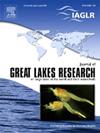稳定的C和N同位素分析重新定义了思科作为密西根湖的远洋鱼食动物
IF 2.4
3区 环境科学与生态学
Q3 ENVIRONMENTAL SCIENCES
引用次数: 0
摘要
密歇根湖的思科(Coregonus artedi)种群正处于扩张(2011年至今)中,从20世纪70年代观察到的接近灭绝的水平恢复过来。从观察到的饮食分析中得到的强有力的证据表明,该种群可能占据一个独特的营养地位,相对于该物种的典型预期。为了验证这些观察结果,从2017年到2020年收集了思科和它们的猎物,进行了稳定的C和N同位素分析。利用现有的稳定同位素数据集,通过量化相对于普通鲑科鱼类和猎物鱼类的同位素生态位空间,评估了cisco的营养地位。建立了饲粮混合模型来估计潜在猎物来源对思科日粮的相对重要性。结果表明,cisco所占据的同位素生态位类似于以食鱼为主的太平洋鲑科(Oncorhynchus spp.)和褐鳟(Salmo trutta)。相反,与主要以浮游生物为食的猎物鱼类存在低同位素生态位重叠。混合模型表明,与胃内容物的观察结果相比,思科饮食中更依赖于远洋猎物来源(包括alewife Alosa pseudoharengus和Bythotrephes longimanus)。在密歇根湖目前的生态条件下,该种群的成鱼似乎扮演着一种远洋鱼食动物的营养角色。本文章由计算机程序翻译,如有差异,请以英文原文为准。
Stable C and N isotope analyses redefine cisco as pelagic piscivores in Lake Michigan
Lake Michigan’s cisco (Coregonus artedi) population is in the midst of an expansion (2011-present) recovering from near extirpation levels observed in the 1970 s. Strong evidence of piscivory derived from observed diet analyses suggests the population may occupy a unique trophic position relative to typical expectations for the species. To verify these observations, cisco and their prey were collected from 2017 to 2020 for stable C and N isotope analyses. Leveraging existing stable isotope datasets for Lake Michigan, the trophic position of cisco was assessed by quantifying the isotopic niche space occupied relative to common salmonine piscivores and prey fish species. Diet mixing models were constructed to estimate the relative importance of potential prey sources to cisco diets. Results suggested that cisco occupied an isotopic niche similar to Pacific salmonines (Oncorhynchus spp.) and brown trout (Salmo trutta) that are mainly piscivorous. Conversely, there was low isotopic niche overlap with prey fish species that are mainly planktivorous. Mixing models suggest greater reliance on pelagic prey sources (including alewife Alosa pseudoharengus and Bythotrephes longimanus) in cisco diets when compared with observations of stomach contents. Under the present ecological conditions in Lake Michigan, it appears that adult cisco in this population occupy the trophic role of a pelagic piscivore.
求助全文
通过发布文献求助,成功后即可免费获取论文全文。
去求助
来源期刊

Journal of Great Lakes Research
生物-海洋与淡水生物学
CiteScore
5.10
自引率
13.60%
发文量
178
审稿时长
6 months
期刊介绍:
Published six times per year, the Journal of Great Lakes Research is multidisciplinary in its coverage, publishing manuscripts on a wide range of theoretical and applied topics in the natural science fields of biology, chemistry, physics, geology, as well as social sciences of the large lakes of the world and their watersheds. Large lakes generally are considered as those lakes which have a mean surface area of >500 km2 (see Herdendorf, C.E. 1982. Large lakes of the world. J. Great Lakes Res. 8:379-412, for examples), although smaller lakes may be considered, especially if they are very deep. We also welcome contributions on saline lakes and research on estuarine waters where the results have application to large lakes.
 求助内容:
求助内容: 应助结果提醒方式:
应助结果提醒方式:


